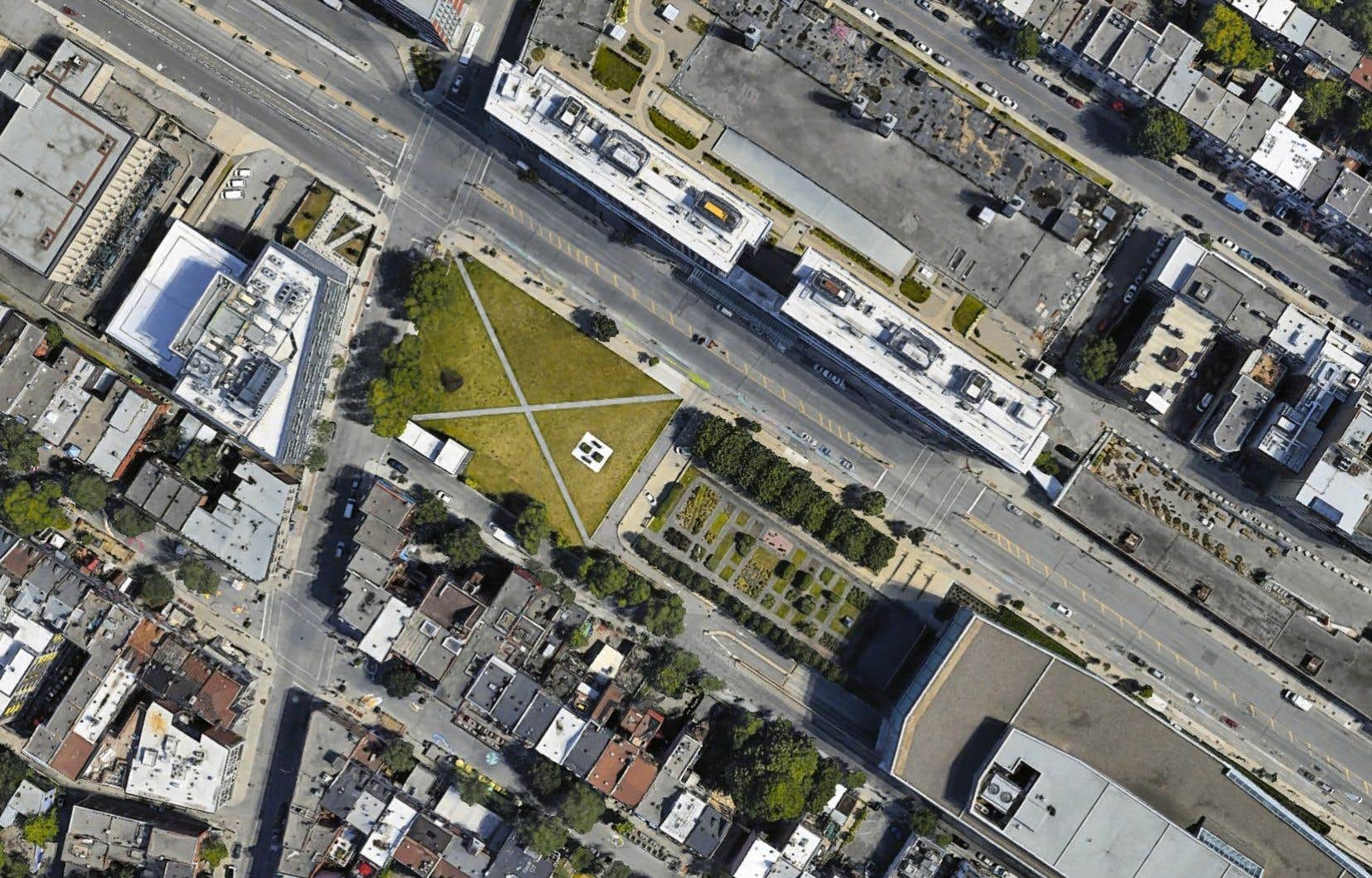The Trojan horse episode is often misunderstood. Or rather told in reverse, because told from the point of view of those who know the massacre to come, namely the soldiers hidden in the wooden belly of the gift. The ruse takes on its full extent and serves as a lesson when we place ourselves on the side of the Trojans: thus arrives an irresistible offering, placed there in general rapture, until we wake up, too late, to the true nature of the monument.
It’s a bit as if Hydro-Québec offered Montreal a new electrical substation on the urban block occupied by one of the province’s main cultural institutions, the Bibliothèque et Archives nationaux du Québec (BAnQ). A building born from an architectural competition, certainly, but an electrical substation nonetheless. In the heart of the city.
As The duty We recently learned that the transaction to transfer the vast green space located north of the Grande Bibliothèque to Hydro-Québec has not yet been officially concluded. Now the gates of Troy are clearly open, and it is high time to glimpse the ignominy to come before those gates close for good.
Defend the void
Let’s take a look at this small plot of land in the Latin Quarter which has been designated by Hydro-Québec as the inevitable location of the future electrical substation. As part of an experiment carried out in an urban studies seminar at the nearby University of Quebec in Montreal (UQAM), we wanted to become spokespersons for this voiceless place located at the corner of Ontario and Berri streets, this anonymous public square which nevertheless brings together fascinating urban intensities, and which has above all always resisted its urbanization, as if it were necessary to mark a pause in any sector overinvested in meaning.
By superimposing all the historical maps of the sector, we see that the current location of BAnQ was indeed occupied by various buildings, but that the marshy area at the foot of the coast at Baron (the historical name of the difference in level between the Ontario and Sherbrooke streets) has always constituted a sort of intertwining between various important urban projects. The Institut du Mont Saint-Antoine, an asylum for young delinquents, was built in 1867 along rue Mignonne (De Maisonneuve), but the orchard occupying the northern part of the site remained vacant. A fire insurance plan from 1915 also designates the location as the “ Garden of Reformatory Prison » !
Following the demolition of the reform school in 1932, the site was occupied from 1952 by the Palais du Commerce, a building itself with a 275-space parking lot located south of the street. Ontario.
When the very first international architectural competition organized in Quebec for the construction of a public building was launched in 2000, the program for the future Grande Bibliothèque aimed to transform the entire quadrilateral formed by Boulevard De Maisonneuve, Rues Ontario. and Berri as well as Avenue Savoie, which clearly reflects the ambition, in the long term, to build on the part that remains unbuilt a potential phase 2 of the library – or at the very least additional cultural equipment. This annex will never see the light of day.
The X marks the place
In its current state, the former “Garden of the Reform” remains largely unbuilt. While the Grande Bibliothèque art garden occupies the southern part, a vast X-shaped path marks the passage of pedestrians who use the grassy area further north. Despite significant traffic, a mental map exercise showed that the place is more or less non-existent in the imagination of people passing through the area. However, it is the first horizon that opens up to travelers who disembark at the Montreal bus station. This is also the terrain that many of the people observed cross who already have their minds elsewhere — at UQAM, the metro or Place Dupuis, in particular. It’s difficult to talk about a place you’ve crossed that doesn’t have a name.
A more in-depth study of the activity on site showed that few people stop there for a long time, with the exception of homeless people with their luggage, who use the void as a decompression airlock, a place break away from Place Émilie-Gamelin, teeming with life nearby. Why then become attached to this banal place? Perhaps precisely because it has this quality of emptiness, of space not completely invested which in return allows us to link together the full places that populate the sector.
In terms of heritage, nothing to defend here. The site is on the edge of the protection area of the bell tower of the Church of Saint-Jacques. However, Hydro-Québec must see something significant in this, since the state corporation will launch its very first architectural competition — another first! — with a view to the construction of an electrical substation in this place of nothing. Although the competition vehicle is recognized as a fruitful exercise, it poses an impossible mission for the architects: to design a blind volume of more than 30,000 square feet – an area greater than the current Grande Bibliothèque -, all “s ‘integrating’ into the surrounding urban fabric.
But how can we guarantee the integration of the future station if its function and its surface area are profoundly inappropriate with its location in the heart of a cultural district? The national Hydro-Québec project once again seems unstoppable, as if the X on the grass marked the place where treasure is hidden. In fact, we are preparing to make a gesture here that we would consider unthinkable elsewhere, the absurd equivalent of building, say, a factory in the monumental axis of the Garnier opera house in Paris.
Let us hope in this sense that this urban void once again finds a way to resist its occupation, or that it at least remains fallow until a better project extends its historic mission: discreetly unifying the urban components. of the Latin Quarter.
